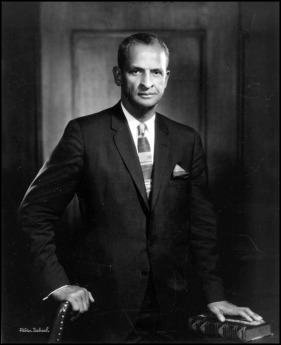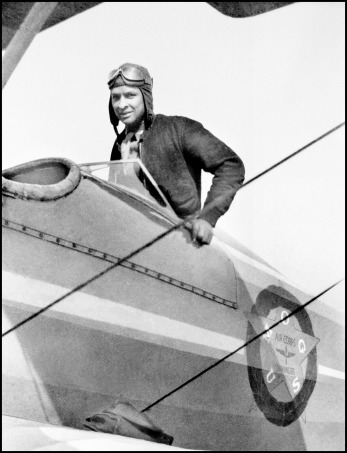
Writing a tribute to someone you have never met but have read about extensively is a task that should not be undertaken lightly. The mere fact that some of the subject’s professional experiences mirror your own does not necessarily make the writing easier. Yet, for his contributions to orthodontics, I respectfully submit that Dr Earl Wiley Renfroe (1907-2000) ( Fig 1 ) was a “Pillar in Orthodontics” who merits recognition as one of “The 100 people most influencing the specialty of orthodontics, 1915-2014.”

Few men have accomplished so much while facing such obstacles and under such conditions. Dr Renfroe’s remarkable life proves that if a person is compelled from within to change age-old traditions of segregation and discrimination, then he can live a life that retains decency, self-respect, and self-worth not just for the sake of personal growth, but also for the benefit of society and those who come after him. Dr Renfroe contributed to our understanding of the mechanical enigmas that challenge orthodontists. His books and articles offered stimulating information and promoted advancements in the specialty. And with his courage, intellect, and perseverance, he transcended and transformed the discriminatory conditions he faced as a dental student. Few orthodontists of my generation would disagree that Earl Renfroe earned the right to be recognized in celebration of the 100th anniversary of the American Journal of Orthodontics and Dentofacial Orthopedics .
Earl Wiley Renfroe was born on January 9, 1907, on the southeast side of Chicago. His father migrated from Tennessee to Chicago in the late 19th century, part of the great exodus of black people from the south. His mother moved from Gallipolis, Ohio. His middle name was his mother’s maiden name. Earl grew up in Chicago’s South Side, an area divided not only by race and ethnicity, but also by class. There were 2 distinct South-Side black communities, with State Street serving as their border. To the east resided the relatively more affluent; to the west, the relatively poor.
Earl’s father worked for the US Post Office in Chicago, which gave him considerable prestige and social status in the black community. At the time, employment at the US Post Office was known in the African American community as “going to college” because of the number of highly educated blacks who worked there. It seemed that Jim Crow prevented them from using their educations to achieve higher goals.
Between 1913 and 1921, Earl Renfroe attended Austin O. Sexton Grammar School, where he was the only African American child in his class. From 1921 to 1925, he attended James H. Bowen High School, again as the lone African American in his class. There, he became the first African American student in the school’s history to attain the rank of cadet commander in its Reserve Officers Training Corps (ROTC).
Upon graduation, he matriculated into Crane Junior College, and in 1927 he enrolled in the College of Dentistry at the University of Illinois in Chicago. While in dental school, at a time when no student loans, government grants, or scholarships were available to ease the financial burden, Earl, like his father, worked at the US Post Office to provide funds for his education. However, such employment ran afoul of policies at the College of Dentistry, which prohibited “excessive” part-time employment. After he pleaded to the administration that without such employment he could not afford to remain in school, the university relented and provided a one-time exemption. It was therefore quite remarkable that when he graduated with a Doctor of Dental Surgery degree in 1931, he was ranked first in his class of 127 students.
A year later, Dr Renfroe received his professional license to practice general dentistry in Illinois. By this time, 20 African Americans had graduated from the University of Illinois. (The first was W. C. Hobbs in the class of 1904.)
Until 1931, the dental school at the University of Illinois at Chicago, like many others north of Dixie, did not permit black dental students to work on white patients or white students to work on black patients. Dr Renfroe thought the practice of de facto segregation in the clinics was wrong. In addition, many white students had told him that they wanted desperately to work on black patients—because there often were more black patients than white, and working on patients without regard to race would allow the students to complete their clinical requirements faster.
From 1935 to 1940, Dr Renfroe served as an instructor in oral diagnosis and in the infirmary. He agreed to hold these part-time positions to help find a favorable solution to the problem of segregation in patient assignments. He performed this work without a salary for a number of years. For taking such a stand, Dr Renfroe was criticized, facing faculty politics and resistance; however, he insisted on forward progress. Once a new and just policy was enacted, he believed it was necessary that the department of patient admissions be under constant observation so that things would not revert to previous practices.
In 1940, Dr Renfroe decided to return to the university as a student. Two years later, he received a Master of Science degree in the specialty of orthodontics from the College of Dentistry. Upon receiving his certification, he became the first black dentist in Chicago to become an orthodontist and arguably the first in the nation.
December 7, 1941, a “date that will live in infamy,” abruptly changed the lives of millions of Americans. World War II prompted Dr Renfroe to volunteer for the Army Air Corps. He had earned his pilot’s license in 1934 ( Fig 2 ), but despite his impressive flight credentials, his age—over 30—disqualified him from flight duty. Although he investigated every avenue, both political and personal, he was unable to obtain a waiver to the pilot age limit. On the other hand, his dental specialty and his being a commissioned officer in the National Guard guaranteed that he could contribute to the war effort. He was posted to the 184th Field Artillery Division at Fort Custer, Michigan, and was quickly promoted to major and transferred to Fort Gordon, Georgia—a “dead-end” assignment completely inappropriate for an officer of his rank. Incensed, he wrote to Army headquarters expressing his indignation. Headquarters agreed and sent Major Renfroe to Fort Huachuca, Arizona, home of the 92nd Infantry Division. (The 92nd Infantry was formed of African American soldiers from all states and served in both world wars.)





